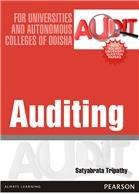Question
Starbucks is the largest coffeehouse company in the world, with over 28 000 stores across 76 countries and a workforce exceeding 160 000. It delivers
Starbucks is the largest coffeehouse company in the world, with over 28 000 stores across 76 countries and a workforce exceeding 160 000. It delivers Starbucks experiences more than 85 million times a week. The company reported net earnings of $2.88 billion in 2017 but recognises that macro-economic conditions affect customer purchases that are discretionary: Our customers may have less money for discretionary purchases and may stop or reduce their purchases of our products or trade-down to Starbucks or competitors lower-priced products as a result of job losses, foreclosures, bankruptcies, increased fuel and energy costs, higher interest rates, higher taxes, reduced access to credit and economic uncertainty.
For Starbucks, profitability depends on making each high-quality beverage at the lowest possible costs. As a result, an intricate understanding of direct costs is critical. Variance analysis helps managers assess and maintain profitability at desired levels. In each Starbucks store, the two key direct costs are materials and labour. Materials costs at Starbucks include coffee beans, milk, flavouring syrups, pastries, paper cups and lids. To reduce budgeted costs for materials, Starbucks
focused on two key inputs: coffee and milk. For coffee, Starbucks avoids waste and spoilage by no longer brewing decaffeinated and darker coffee blends in the afternoon and evening, when store traffic is slower. Instead, baristas have been instructed to brew a pot only when a customer ordered it. With milk prices rising (and making up around 10% of Starbucks cost of sales), the company has switched to 2% milk, which is healthier and costs less, and redoubled efforts to reduce milk-related spoilage.
Labour costs at Starbucks, which cost 24% of company revenue annually, have been another area of variance focus.Many stores employ fewer baristas and, in some stores, Starbucks has adopted many lean production techniques. With 30% of baristas time involved in walking around behind the counter, reaching for items, and blending drinks, Starbucks tries to make its drink-making processes more efficient. But, while Starbucks closely monitors costs, it is also embarking on other strategies to elevate the brand again. The company has opened Roastery outlets which deploy coffee masters who can serve ultra-high-end beans such as Colombia Montebonito and Sumatra Peaberry Lake Toba. It has also opened Reserve bars which serve Starbucks Reserve Whiskey Barrel-Aged Sulawesi cold-brewed coffee combined with a whiskey barrel-aged vanilla syrup, shaken with ice, strained and served chilled alongside a glass of sparkling water. The bars will be more coffee as an experience than simply coffee as a beverage. Starbucks will open 2030 Roastery locations and will add Reserve bars to up to 20% of its global locations by 2021. Continued focus on both direct-cost variances will be critical to the companys future success particularly during periods of economic uncertainty.
PLEASE ANSWER in FULL and ALL QUESTION
-
Discuss the importance of cost management for a beverages company such as Starbucks and the challenges faced by extreme cost reduction.
-
Suggest ways Starbucks can manage its direct costs (please discuss which costs are considered direct in this company) without compromising its quality. Use appropriate references if necessary to support your arguments.
Step by Step Solution
There are 3 Steps involved in it
Step: 1

Get Instant Access to Expert-Tailored Solutions
See step-by-step solutions with expert insights and AI powered tools for academic success
Step: 2

Step: 3

Ace Your Homework with AI
Get the answers you need in no time with our AI-driven, step-by-step assistance
Get Started


